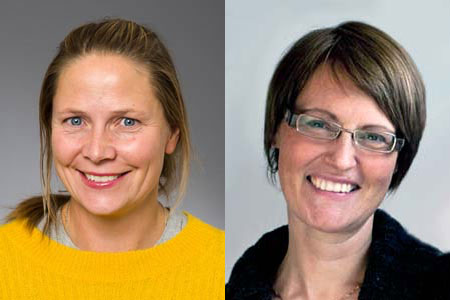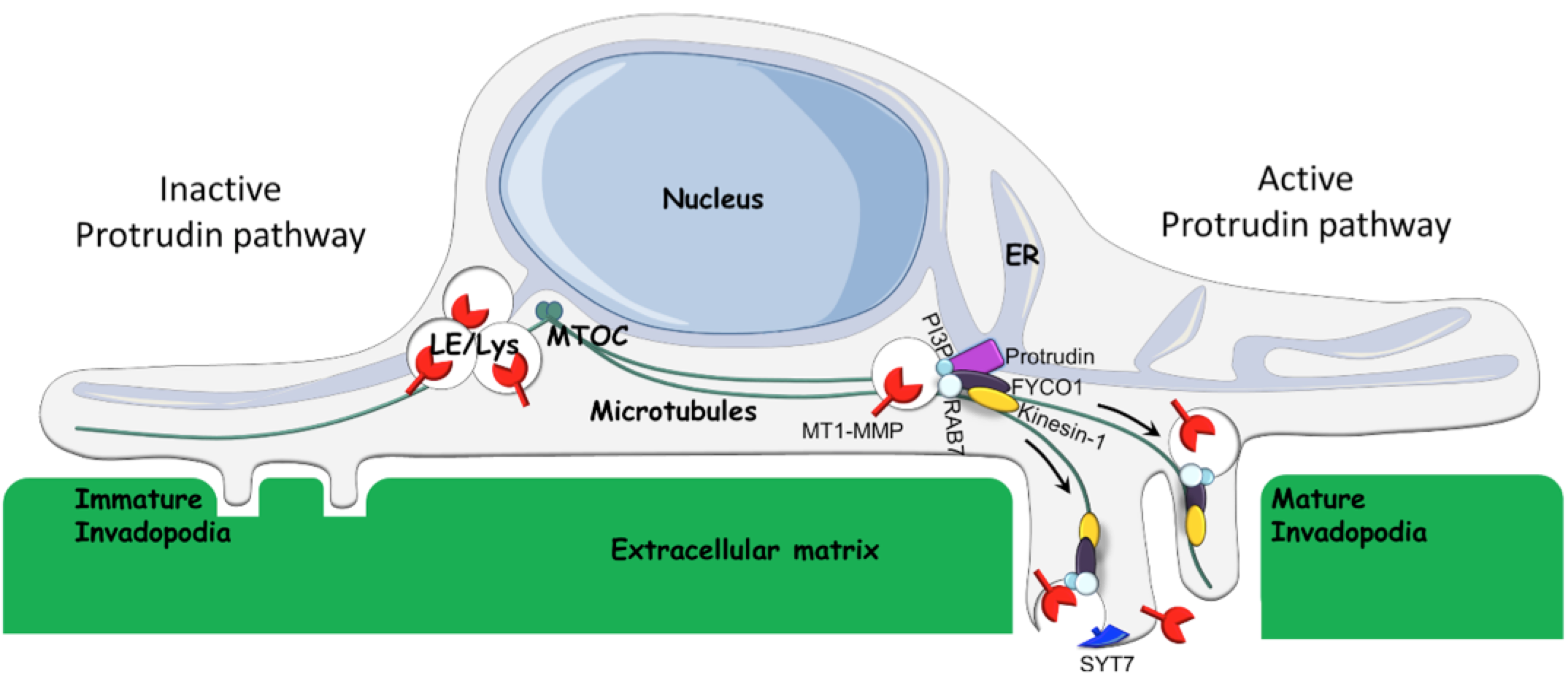Pedersen and Raiborg identify mechanism of how cancer cells grow protrusions that promote tissue invasion

Metastases are the major cause of cancer related deaths. One important characteristic of disseminating cancer cells is that they develop invadopodia. Invadopodia are actin rich plasma membrane protrusions, which secrete matrix metalloproteinases that degrade the extracellular matrix, allowing the cancer cells to escape the primary tumour site.
In a recent article in Journal of Cell Biology, published online on the 1st of June, 2020, scientist Nina Marie Pedersen and her coworkers in Camilla Raiborg’s project group at Institute for Cancer Research and Centre for Cancer Cell Reprogramming (CanCell), identify a new mechanism of how cancer cells grow invadopodia. Moreover, they show how the matrix metalloproteinase MT1-MMP is transported to the invadopodial tip.
Pedersen and co-workers found that invadopodia growth and the exposure of MT1-MMP at the invadopodial tip are controlled by contact site formation between Protrudin in the endoplasmic reticulum and MT1-MMP containing endosomes. This contact triggered the translocation of the endosomes to the cell periphery, and their subsequent fusion with the plasma membrane provided membrane for the growing invadopodia. In addition, MT1-MMP was exposed at the cell surface, mediating degradation of the extracellular matrix.
By overexpressing this pathway in a non-cancerous cell line, Pedersen et al found that the cells grew invadopodia and became invasive. When the Protrudin pathway was inhibited by CRISPR/Cas9 mediated knock down of Protrudin, highly invasive breast cancer cells failed to develop invadopodia and lost their invasiveness.
The work contains important implications for cancer therapy: Targeting the endosome transport/fusion process that delivers MT1-MMP to the plasma membrane for invadopodia growth may have potential as a new therapeutic approach.
This work was sponsored by the Norwegian Cancer Society and Helse sør-øst. It also involved a crucial collaboration, InvaCell, with the team of Philippe Chavrier at the Curie Institute in Paris, sponsored by a generous donation by Mr. Trond Paulsen through the Radium Hospital Foundation.

Links:
The JCB article:
Pedersen NM, Wenzel EM, Wang L, Antoine S, Chavrier P, Stenmark H, Raiborg C (2020)
Protrudin-mediated ER-endosome contact sites promote MT1-MMP exocytosis and cell invasion
J Cell Biol, 219 (8)
DOI 10.1083/jcb.202003063, PubMed 32479595
Home page of Camilla Raiborg's project group:
Protein dynamics in tumor suppressor pathways
Nina Marie Pedersen's publications
Home page of Harald Stenmark's group:
Cellular Membrane Dynamics